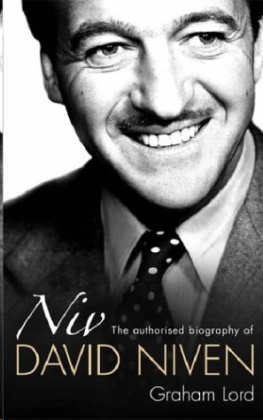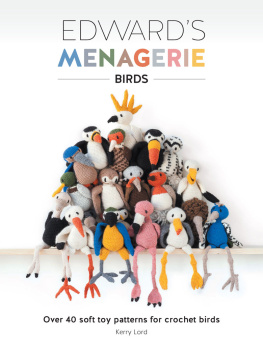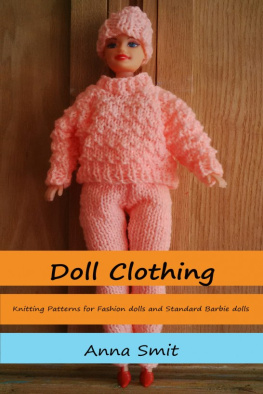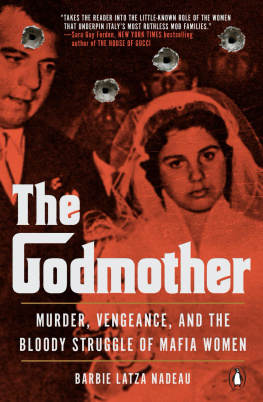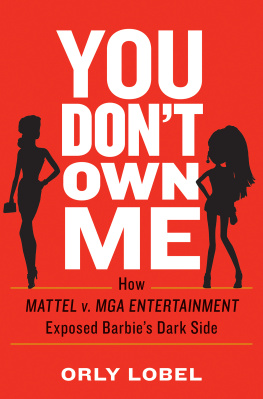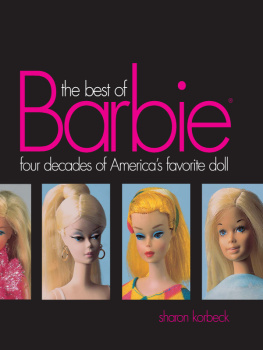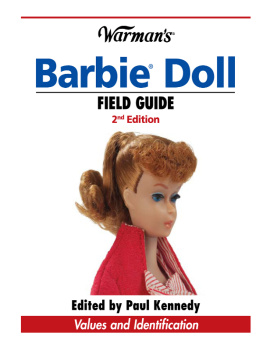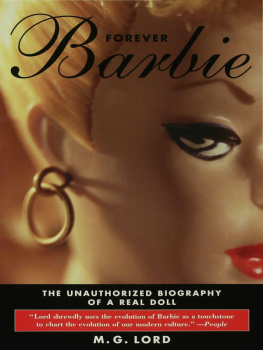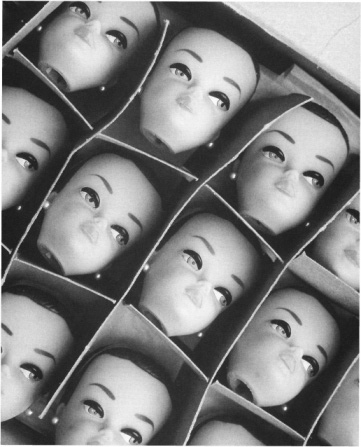J. ANTHONY LUKAS, author of Common Ground
The
Unauthorized
Biography
of a
Real Doll
FOREVER
BARBIE
M. G. LORD

In memory of
Ella King Torrey
AUTHOR'S NOTE: This book was prepared
in cooperation with Ella King Torrey,
who began researching Barbie
in 1979 as part of a Yale University
Scholar of the House project.
Copyright 1994. 1995, 2004 by M. G. Lord
Preface copyright 2004 by M. G. Lord
All rights reserved. No part of this book may be reproduced or transmitted in any form or by any means, electronic or mechanical, including photocopying, recording, or by any information storage and retrieval system, without permission in writing from the Publisher.
First published in the United States of America in 1994 by William Morrow and Company Inc. First paperback edition published in the United States of America in 1995 by Avon Books. This paperback edition published in 2004 by Walker Publishing Company, Inc.; published simultaneously in Canada by Goose Lane Editions.
For information about permission to reproduce selections from
this book, write to Permissions. Walker & Company,
104 Fifth Avenue. New York. New York 10011.
Library of Congress Cataloging-in-Publication Data
available upon request
eISBN: 978-0-802-71923-2
Original book design by Alexander Knowlton
Fashion Queen Doll Heads (frontispiece): Barry Sturgill
Visit Walker & Company's Web site at www.walkerbooks.com
Printed in the United States of America
2 4 6 8 10 9 7 5 3 1
CONTENTS
PREFACE TO THE 2004
PAPERBACK EDITION
CHAPTER ONE
WHO IS BARBIE,
ANYWAY?
CHAPTER TWO
A TOY IS BORN
CHAPTER THREE
SEX AND THE SINGLE DOLL
CHAPTER FOUR
THE WHITE GODDESS
CHAPTER FIVE
THE BOOK OF RUTH
CHAPTER SIX
SOME LIKE IT BARBIE
CHAPTER SEVEN
PAPER DOLL
CHAPTER EIGHT
BARBIE LIKE ME
CHAPTER NINE
MY FAIR BARBIE
CHAPTER TEN
GUYS AND DOLLS
CHAPTER ELEVEN
OUR BARBIES, OUR SELVES
CHAPTER TWELVE
THE WOMAN WHO WOULD BE BARBIE
CHAPTER THIRTEEN
BARBIE OUT OF CONTROL
CHAPTER FOURTEEN
SLAVES OF BARBIE
CHAPTER FIFTEEN
BARBIE FACES THE FUTURE
PREFACE TO THE 2004
PAPERBACK EDITION
Much has happened in the ten years since Forever Barbie teetered into the marketplace on its steep stiletto mules. After September 11, 2001, Barbie became a symbol of something larger than her shapely self. She is everything that Islamic extremists hate: an unapologetically sexual, financially independent, unmarried Western woman. And with all the cars she's amassed, there's no getting around the fact that she drives, an activity forbidden to women in the Kingdom of Saudi Arabiawhere, incidentally, she has been banned since 1995. In an annual campaign timed to coincide with the beginning of the school year, that country's religious police blanket schools and streets with posters decrying her "revealing clothes" and "shameful postures."
A lot has also happened at Mattel. Former chief executive officer Jill Barad, who could do no wrong in 1994, was not doing very much right in 2000, when she resigned. In the 1980s, when Barad joined the Barbie team, the doll was realizing about $250 million in annual business. By the time she left, due in large part to her efforts, Barbie's sales had reached $1.7 billion. Mattel's pushing, pushing, pushing to reach that plateau, however, left many resentfulespecially in 1997, when collectors, in what the press called the "Holiday Barbie" scandal, shelled out full price for "limited edition" seasonal dolls, only to discover that Mattel had overproduced them and by January was dumping them with discounters and cable-TV networks.
Under Barad, Mattel eliminated rival toymakers by buying them, regardless of the cost. It ingested Pleasant Company in 1998 and by 2003 had thoroughly Barbie-ized its tony American Girl dolls. The original dolls, accessorized to reflect periods in American history, came with bookstraps and school desks; the Mattel version has a glitter guitar, a bikini, and a boogie board. Mattel's big mistake, however, occurred in the spring of 1999, when Barad acquired the Learning Company for more than what many experts believed it to be worth. That fall, when the Learning Company delivered a $105 million loss, Mattel's stock declined by seventy percent of its value. Four months later Barad was out, though not exactly in the cold. Her severance package was more than $40 million.
Such management upheavals, however, are not new at Mattel. In the 1970s, Barbie inventor Ruth Handler was thrown out of the company she founded before pleading no contest to conspiracy, mail fraud, and falsifying SEC information. With time, however, the world ceased to care that she was a felon. From the middle 1980s until her death from cancer in 2002, she signed autographs and accepted adulation at all major events celebrating the doll.
Mattel's profits have also risen and fallen cyclically. Barbie's sales tanked in the seventies, but soared in the eighties and early nineties, when the baby boomers had their children. When the boomer's children have children, I predict sales will peak again.
At age forty-five, despite that body, Barbie has become a traditional toy not a bad girl, but "Mrs. Smarty-pants," as one nine-year-old recently called her. I watched this girl and her friends play with the 2003 Christmas season's must-have dolls, a street-smart bunch called Bratz, not made by Mattel. But as soon as there was troubleone of the Bratz got sickDr. Barbie was summoned. She was a professional, an authority figure; the girls gave her an English accent. Because of Barbie's mutability, I doubt any new doll will ever eclipse her. Even at the peak of her sales, Barbie was the salutatorian, not valedictorian, of the toy marketcoming in second at the holidays to the latest flash in the pan.



